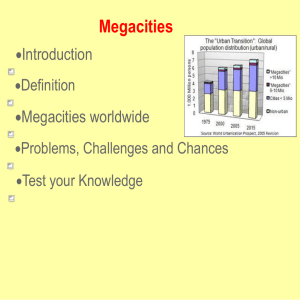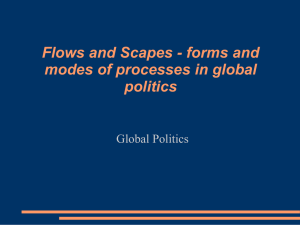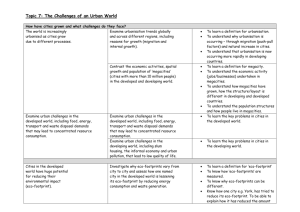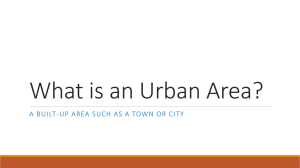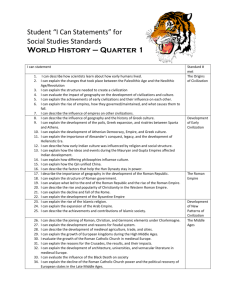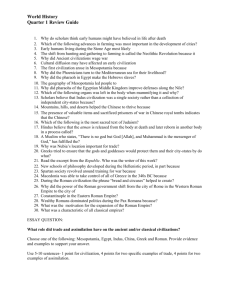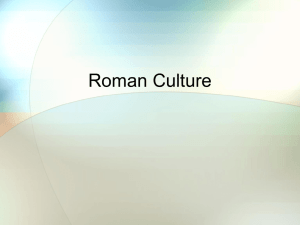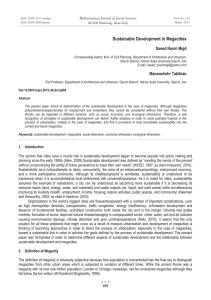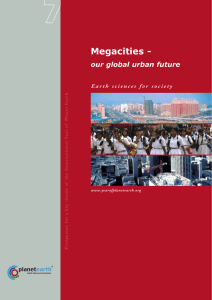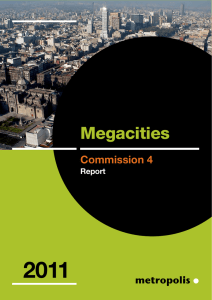Unit Seven: Cities and Urban Land Use Advanced Placement
advertisement
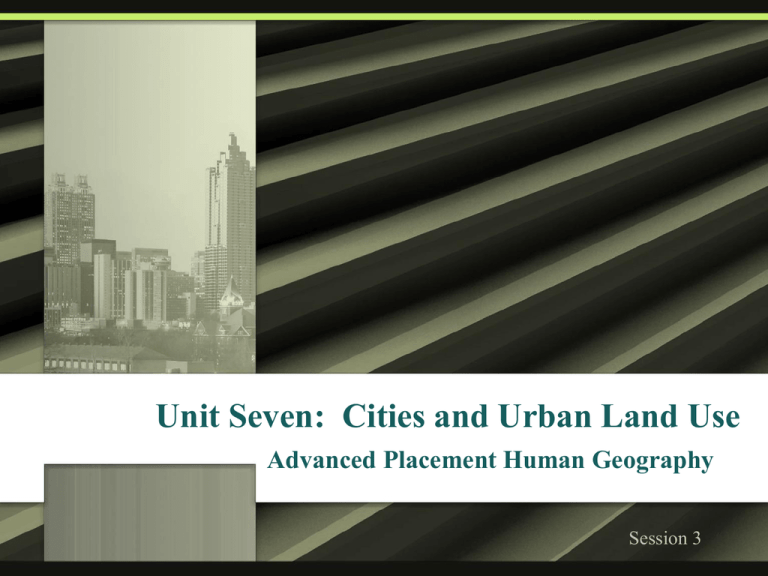
Unit Seven: Cities and Urban Land Use Advanced Placement Human Geography Session 3 Early Urbanization Around the Mediterranean Early Settlements • Settlements were originally established in the area around the eastern Mediterranean Sea about 2500 years ago by forerunners of the ancient Greek s. City-states City-states were organized into self-governing communities that included the nearby countryside. City-states • The city-states provided the following for the surrounding hinterland: – government – military protection – other public services • Athens was probably the first The Greeks city to reach a population of 100,000 during the 5th and 4th centuries B.C.E. The Romans • When the Romans succeeded the Greeks as rulers of the region, their urban empire incorporated: – a large part of Europe’s interior – North Africa – former Mesopotamian lands The Romans • Many cities were part of the hinterlands. • Rome reached a population of 250,000 inhabitants in the second century B.C.E. The Romans • The cities of the Roman Empire were connected by land and sea routes. • Roman roads were so expertly built that many are still intact today. Ruins of a Roman City These are Roman ruins in southern France. Ruins may be found in many parts of Europe and other areas controlled by Ancient Rome. Urban Growth in China Earliest Civilizations in China The earliest civilizations in East Asia grew around the Huang River and its tributaries. Earliest Civilizations in China • The great Silk Road stretched from China to the Mediterranean Sea. • This trade route brought much wealth and diversity to Chinese cities. Earliest Civilizations in China • These cities became centers for: – – – – government culture education the economy Urban Growth in China • By the 11th century, the greatest of the trading cities of the south was Hangzhou. – It was home to merchants, craftsmen, and government officials. – Its primary exports included silk, copper coins, and ceramics. EARLY URBAN CHINA By the time of the Han Dynasty, an urban empire had developed in China Medieval, Preindustrial, and Industrial World Cities Medieval Cities • After the fall of the Roman Empire, urban life began to revive during the 11th century. • Urban life was stimulated by trade between the Italian cities of Genoa and Venice and the Middle East (a result of the Crusades). Medieval Cities • Characteristics of medieval cities: – narrow and winding streets – occupational groups (e.g. bakers, carpenters) clustered in distinct sections of the city Medieval Cities • Residents often sought to keep out people who were different. – The term “ghetto” first described the segregation of Jews in Venice. Preindustrial cities • Primate cities: population is more than twice as large as second largest city in the country/state; serves as a cultural, economic, and political center • Examples: – Paris – London Preindustrial cities • Some scholars believe that world cities varied in this era and that it was a mistake to categorize all of them as “preindustrial.” • Example: – Religious buildings dominated the landscape in the Middle East, the Americas, and Europe. Preindustrial cities • Mercantile city (developed in the pre-industrial age—before the Industrial Revolution): – Trade was central to the design of the city. – The central square was lined with shops that specialized in products brought in by the trade routes. The Industrial Revolution • Manufacturing city – Factories attracted workers from rural areas. – Small, narrow streets gave way to wide boulevards to accommodate the flow of commercial traffic. – City planning and zoning was introduced (where to locate businesses, houses, etc.). The Industrial Revolution • Manufacturing city – Cities grew along railroad lines that connected the cities to markets. The Industrial Revolution • Manufacturing city – Cities suffered from problems such as: • overcrowding • sanitation • pollution • disarray The Industrial Revolution • Manufacturing city – As cities grew, problems multiplied, although conditions improved as a result of: • government intervention • legislation • introduction of city planning and zoning Rural-Urban Migration and Urban Growth Connection between Industry and Urbanization Industrial development led to urban growth during the 1800s in Europe and North America. Urban Growth Today about ¾ of people in developed countries live in urban areas. Urban Growth • More recently, migration from rural to urban areas has rapidly increased in the less developed countries of: – Africa – Asia – Latin America Urban Growth • As countries begin to industrialize, opportunities shift from rural to urban areas. • The pull to the city stimulates migration. Urban Growth • Nearly all countries have two things in common: – The proportion of people living in cities is rising. – The cities themselves are large and growing. World Cities and Megacities Modern Cities • In the place of great manufacturing cities are modern world cities that have become centers of: • business • consumer services • public services World Cities • The three world cities that serve as the largest regional centers are: – London – New York – Tokyo WORLD CITIES World Cities • World Cities—based on the centrality/accessibility of the following services – Business (offices, stock exchanges, transportation hubs) – Consumer (retail, entertainment, cultural) – Public (government headquarters, seats of political power) Megacities Megacities have populations of more than 10 million people in their metropolitan/urbanized areas. The term was created by the United Nations in the 1970s. No cities were that large in 1900. Ten largest megacities in the world: Megacities Tokyo Mexico City* Seoul, South Korea New York City Sao Paulo, Brazil* Mumbai, India* Delhi, India* Shanghai, China* Los Angeles, CA Osaka, Japan *Located in the semi-periphery Megacities • Many megacities in less developed countries house new arrivals in: – overpopulated apartment buildings – tenements – slums Megacities • Many megacities are unable to control expansion and haphazard development that seriously affect the quality of life within the urban area. Key Terms to Review • • • • • • • • • • • Early settlements City-states Greeks Roman Empire Hinterlands Silk Road Medieval city Preindustrial city Industrial city Ghetto Segregation • Primate cities • Mercantile city • Manufacturing city • City planning • Zoning • Rural to urban migration • World cities • Megacities
